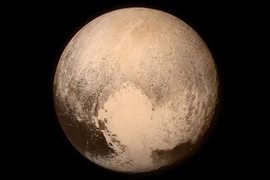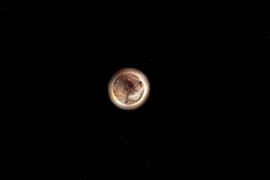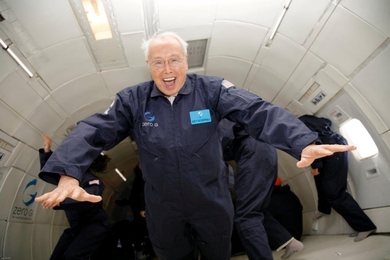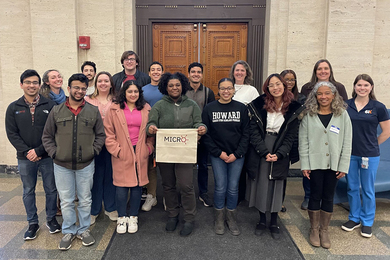The MIT community is invited to join Department of Earth, Atmospheric and Planetary Sciences (EAPS) Professor Richard P. Binzel, a science team co-principal investigator for the NASA New Horizons mission to the Kuiper Belt, for an engaging review of what the encounter data have revealed so far. Binzel will speak in Room 10-250 on Wednesday, Sept. 9 from 4 to 5 p.m.
After nearly two decades of struggling for approval, the New Horizons mission finally reached the launch pad in January 2006. Nine-and-a-half years later, this past July, the piano-sized spacecraft reached the Pluto system, revealing an amazingly bizarre planetary world. Ice mountains as tall as the Rockies and smooth plains of frozen carbon monoxide 500 km across are just some of the surprising features seen. According to Binzel, Pluto appears to be a globally changing planet with seasonal cycles ranging from decades to millennia producing an evolving landscape of nitrogen ice glaciers and variable atmospheric pressure.
Pluto and its largest satellite, Charon, form a “double planet” system orbiting a common center of gravity located outside of either body. Charon’s surface also appears relatively young and crater-free, implying some recent era geologic activity. Completing the system are four small moons found to be irregularly shaped with complex spin patterns in their own regularly spaced orbits. As New Horizons continues its voyage out of the solar system, a close encounter with at least one newly discovered Kuiper Belt object appears possible within the next four years.
Binzel, who holds a joint appointment in the Department of Aeronautics and Astronautics, focuses his research on planetary spectroscopy, specializing in the visible to near-infrared wavelength reflectance properties of asteroids and meteorites. He has mapped the geology of the asteroid belt through such telescopic observations, cataloging the compositions of nearly 2,000 asteroids — with three new asteroid discoveries to his credit. In 1999, Binzel invented the Torino Scale, a method for categorizing the impact hazard associated with near-Earth objects (NEOs) such as asteroids and comets. Asteroid 2873 was named in his honor by the International Astronomical Union in recognition of his significant contributions to the field.
Pluto is another important facet of his research; he was on the Planet Definition Committee that developed the proposal to the International Astronomical Union's meeting in Prague in 2006 on whether Pluto should be considered a planet. While the outcome of the meeting determined Pluto to be a dwarf planet, Binzel strongly believes research shows Pluto to fulfill the criteria for full planet status. He is a co-investigator on the New Horizons mission, which has delivered the most detailed images and data to date of Pluto and its moons, gathered during its flyby only 7,750 miles from the surface.
In addition to being a co-investigator on the NASA New Horizons mission science team, he is a co-investigator on the OSIRIS-REx mission, which will launch in 2016 with the intent to retrieve samples from asteroid Bennu and return them to Earth in 2023 for study.
Binzel was awarded the H. C. Urey Prize by the American Astronomical Society in 1991, and was awarded a MacVicar Faculty Fellowship for teaching excellence at MIT in 1994. He has also edited several books regarding asteroid research. Binzel earned an undergraduate degree in physics from Macalester College, and a PhD in astronomy from the University of Texas.










